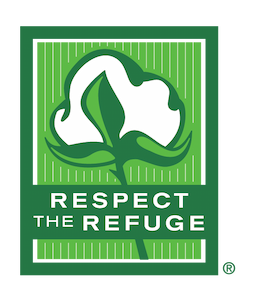5 MIN READ
Cotton Defoliation and Late Planting Concerns
October 6, 2018
It is important for cotton plants to drop their leaves in order to hasten harvest; however, there is a balance that must be found in order to achieve efficient defoliation.
Leaves need to remain intact long enough to form the abscission zone, the location at the base of the leaf petiole where the leaf will separate from the plant, in order to prevent leaf sticking. The plant hormone ethylene promotes abscission and leaf drop. Defoliants can work by one of two modes of action: herbicidal or hormonal. Herbicidal defoliants injure the leaf to stimulate ethylene production, whereas hormonal defoliants increase the ethylene concentration in the leaf without leaf injury.
Goals for defoliation:
- Improved cotton grading – reducing/eliminating stain and trash
- Efficiency and speed of picking
- More rapid drying to permit picking earlier in the day
- Straightening of lodged plants for picking efficiency
- Reduction of boll rot
- Stimulation of boll opening
Harvest aid decisions are influenced by the cotton crop condition and maturity, weather conditions, and the planned harvest schedule. Once a decision is made to apply a defoliant, the following considerations must be made: when to apply, what chemical to use, and the rate at which to apply. The materials to use and rates at which to apply may differ with changes in the crop and weather throughout the season.
Ultimately, crop maturity and desired harvest schedule are the most important factors in determining when to defoliate. Premature defoliation may result in lost yield potential and lower fiber quality or micronaire. Delayed defoliation can increase the potential for boll rot and lost or damaged lint. Defoliating late may also cause defoliant activity to be inhibited by cooler temperatures.
Timing: The most widely used method to time defoliation is by using the percentage of open bolls, based on determining the total percentage of open bolls in a field. It is commonly recommended to defoliate when 60% of bolls in a field are open.1,2
The Nodes Above Cracked Boll (NACB) method focuses on the unopened portion of the crop. NACB is determined by locating the uppermost first-position boll that is cracked open with visible lint and counting the number of main-stem nodes to the uppermost harvestable boll. Most recommendations call for a defoliation application at 4 NACB. With low plant population and skip-row cotton, recommendations call for a defoliation application at 3 NACB.1,2
Regardless of the method used to time defoliation, producers should also observe maturity by visual inspection. Bolls are generally considered mature when they are difficult to cut in a cross-section with a knife, fibers string out when cut, and seeds have begun to form a brown or black seed coat.
Defoliants tend to work best under warm, sunny, humid conditions. Cool temperatures at the time of application up to five days afterward may reduce efficacy of defoliants and produce disappointing results. Better defoliation can be expected if it is possible to wait for a three- to a four-day stretch of sunny, warm weather.
Considerations for Late-Planted Cotton: Apply a defoliant according to harvest planning and air temperature. Defoliants require temperatures above 60°F to be effective. In late-planted cotton, defoliation should be timed according to the mature bolls. While a once-over harvest is obviously desirable, considering a second picking on late-planted cotton can prevent weathering of the most profitable bolls. Those bolls set late in the year in the upper canopy are less likely to contribute greatly to overall yield. An ethephon-based boll opener may be added to help increase the amount of bolls ready for harvest but does not promote crop maturity. Ethephon products need at least 50 DD60s to work, and higher rates are needed under cool temperatures.3
Sources
1 Edmisten, K. and Collins, G. 2018. 2018 Cotton information: Ch 12. Cotton defoliation. NC State Extension. https://content.ces.ncsu.edu/cotton-information/.
2 Whitaker, J. and Collins, G. 2015. Cotton defoliation in Georgia. University of Georgia. https://site.extension.uga.edu/brooksag/.
3 Craig, C. Managing late-planted cotton. The University of Tennessee Extension. W074. https://extension.tennessee.edu/.
Web sources verified 9/27/18.
ID 180928101525






